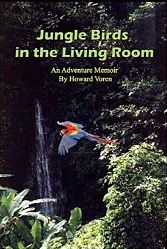Opposing Avicultural Viewpoints
© Howard Voren. Click here to use this content.Q: We have an aviary with 50 pairs of birds of various species. We manage our aviaries very closely. We have artificial eggs to fool a pair that would otherwise eat them. With some hens, we take the eggs for artificial incubation just after they finish laying the clutch because they don’t sit well. For those pairs that hatch their babies but do not feed them, we pull the eggs just before hatching so they can be hand-fed from the moment they need it. There are also a few pairs of small conures that will hatch five babies but only feed three. In these cases, we pull the oldest two when the last egg hatches.
All of this management has increased our productivity substantially. Until recently, we took great pride in the results of our efforts. We have now come under severe criticism from several influential members of our local bird club. They say that our “meddling” is a bad thing and that we are perpetuating poor stock.
They believe that those birds that do not produce successfully on their own should be culled from our breeding stock. Their reasoning is that raising babies from pairs that will not reproduce successfully without intervention will produce babies that, in turn, will not breed successfully when they mature. They act as if we will be responsible for the failure of future release programs in the wild and say that we should feed and house our birds in the best way possible and let nature take its course from there. They also say that birds should not be taken from the nest for hand-feeding until their eyes are open so that they will know how to feed their babies when they mature. Are we as bad as these people say?
A: Not too long ago, when aviculture came under fire from several influential conservation groups, several avicultural organizations countered their attack with an “aviculture equals conservation” campaign. This campaign was very successful and has improved our “image” in the eyes of many conservation groups.
Unfortunately, there is usually a little bit of bad that comes along with anything good. Some aviculturists got so caught up in the conservation movement that they substituted conservation for aviculture as their primary goal. It seems that to many of these people, the only goal of captive production should be the perpetuation of a strong gene pool, the end goal of which is to someday repopulate the rain forests (if they still exist).
To these people, aviculture has become the by-product of their conservationist goals. To people like you and me, conservation is the by-product of our avicultural skills. Many times, people try to coerce other people into going along with their opinions. Don’t allow anyone to “shame” you into forgetting what your primary personal goals are. If you feel like ignoring conservationist goals, that is your right. In some cases, strict conservationist philosophy is not compatible with what many believe should be the goals of aviculture.
An example of this is the conservationist stand that we should not be selectively breeding for color, size or temperament. Some believe that selective breeding to bring out the characteristics that make birds more desirable to the pet trade might also cause the loss of some of the traits that allow them to survive in the wild. These people believe that a tenth-generation captive-bred Amazon parrot that no longer has the skills necessary to survive in the wild is, somehow, no longer a “real” Amazon parrot.
By the same reasoning, the only “real” Homo Sapiens that still exist are the cultures that continue a primitive tribal existence in the remaining rain forests. Personally, I would not like to see any of my children (feathered or otherwise) returned to such a brutal environment. I would also remind these people that the pet trade is the “hand that feeds us.” Take pride in the fact that the skills you have learned by your “meddling” have made you a skilled aviculturist.


